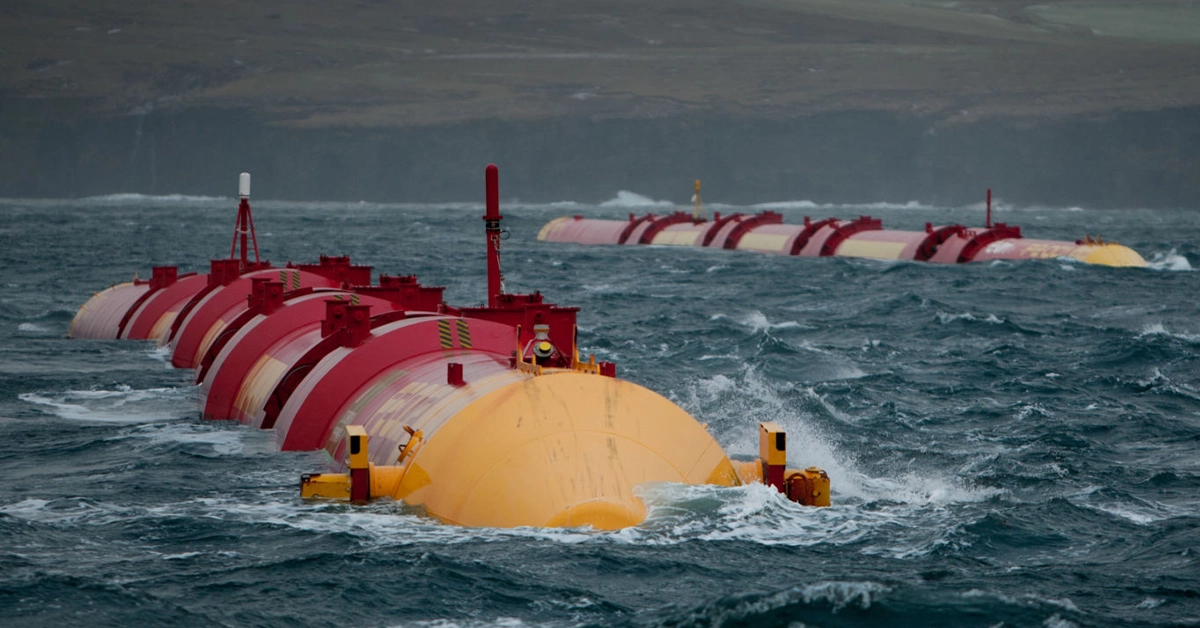
The potential of Sea Wave Energy
Nearly one third (2.4 billion) of the world’s population lives within 100 kilometers of a coastline. The ocean is exceedingly powerful: just in the U.S. alone, the yearly potential of coastal waves is estimated to be as much as 2.64 trillion kilowatt-hours (kWh), or the equivalent of about 66% of U.S. electricity generation in 2017.
Wave Power Technologies
There are quite a few technologies that aim to utilize wave power. Here are some of the most commonly found devices:
Terminator Devices
Terminator devices “kill” waves by facing them straight on to capture or reflect the power of the wave. Water enters through a subsurface opening into a chamber, forcing the trapped air to push the column up and down like a piston. The air then goes through an opening that is connected to an energy-generating turbine. These devices generally have power ratings of 500 kW to 2 MW, depending on the wave climate and the device dimensions.
Attenuators
Attenuators ride waves by positioning themselves along the direction of the rolling wave. These devices use the differing heights of waves along the length of the device to flex their segments. These are connected hydraulic pumps or other converters to generate power as the waves move across the length of the attenuator.
Point absorbers
Point absorbers look like buoys from a distance, but they are actually small wave-power generators that use the rise and fall of swells to generate electricity in various ways including directly via linear generators.
Additional Wave Power Devices
These are some of the more common forms of wave power generators, but there are many more, including overtopping devices which work similarly to hydroelectric dams or the newest technologies that utilize pressure differentials created by waves to generate electricity. People have been fascinated by waves and their energetic potential for a long time. The first concept was patented by French physicist Pierre-Simon Girard in 1799. From 1855 to 1973 there were already 340 patents filed in the UK alone.
Waves can be extremely powerful, their utilization in energy releases little to no carbon emissions and they can be utilized all across the world. The technology is still in development, but several countries such as Britain, Portugal, and the U.S. have already figured out ways of harnessing the green energy that rushes onto their coasts at a near-constant basis.
Challenges of Wave Energy
There are a few issues though. Wave-producing swells, as any surfer would tell you, aren’t extremely consistent on a day-by-day basis. Most coastlines have seasons (usually winter) when large swells form regularly and they create powerful waves. However, the offseason often features the reverse — long flat spells or very small waves that are barely of interest to those who ride them, let alone power plants. Wave power generators are unsightly and they can spoil otherwise nice-looking beaches. Additionally, the technology isn’t there yet. The energy found in waves is only partially captured by even the most advanced wave power generators.
Still, waves are a potent source of energy that has a large number of advantages over other renewables. The technology is still developing and we’re seeing an increasing amount of practical uses all across the world. There are certain cases in which they make sense, and we’re slowly beginning to figure out where exactly to utilize them to reach a greater energy efficiency.
At FUERGY, we follow this vision and bring unique solutions that bridge the gap between economic and ecological. Read our other articles or contact us today! Our experts are here to help you find a tailor-made solution to your needs.
New dimension of energy optimization





